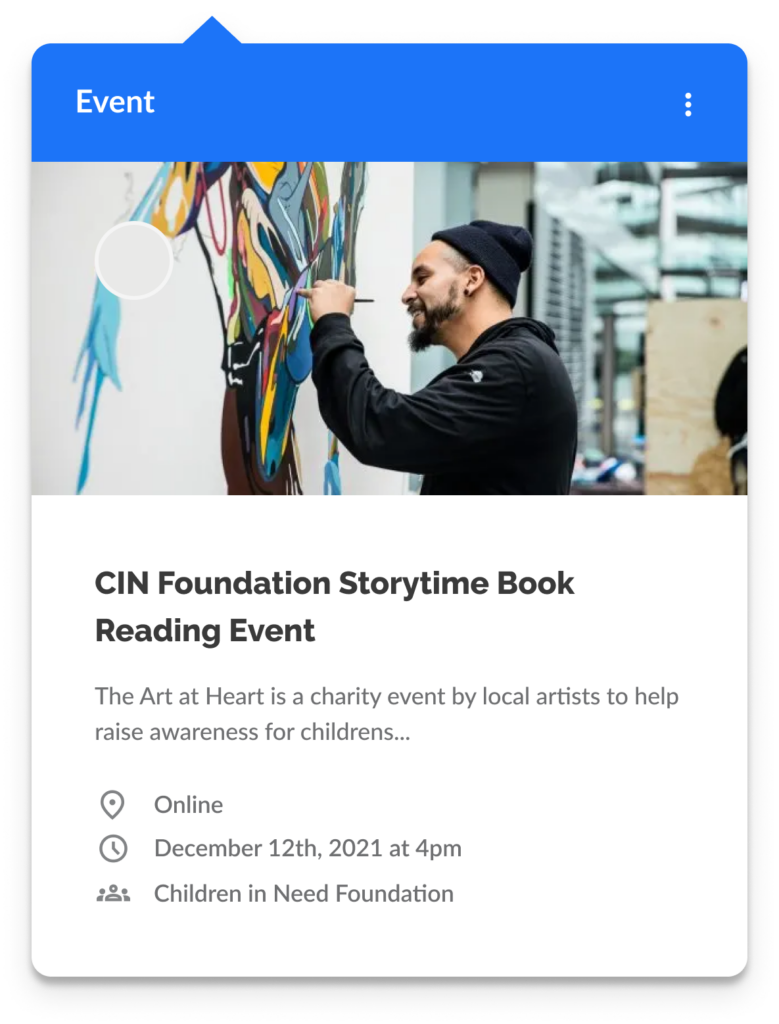While the goal of a nonprofit is to improve the well-being of members in its local community, businesses, which are often seen as being on the other side of the equation, can partner with nonprofits for mutual benefit. As a result of these partnerships, fundraising events become more effective, the pool of volunteers grows, and companies begin to see the direct impact of their social good contributions.
These nonprofit-corporate partnerships connect those who need help (the nonprofits) with those looking to help (the businesses). It isn’t necessary to go through a formal approval and signing process to establish a partnership. Rather, companies will partner with nonprofits they value in order to advance a nonprofit’s mission: improving the quality of life for individuals in its communities.
Establishing a partnership is just one piece of the puzzle. In order to achieve long-term success and mutual gain, the partnership must be maintained over time.
Why should nonprofits and businesses partner together?
Businesses can go beyond stating their commitment to change
Several businesses claim that they want to make a difference in the world. They know that being more socially responsible is an effective way to improve their reputation and positively shape the way their stakeholders perceive their brand.
However, it’s not enough to say that you want to do something. In order to assure people of your company’s dedication, you need to take action.
One way for businesses to act on their commitment to change is to partner with a nonprofit. When stakeholders see that your organization is regularly supporting a nonprofit, they will know that you’re truly dedicated to helping change the world.
Nonprofits can receive help from motivated individuals
On the other end, partnering with a business gives nonprofits instant access to a large pool of employees who can:
- Facilitate donations
- Provide volunteer assistance
- Create peer-to-peer fundraisers
- Organize events (employee-led events on behalf of your cause)

Employees at a for-profit company possess passion, motivation, and enthusiasm and often seek to lend their support to causes in need.
As companies begin to introduce volunteer programs that will improve work-life balance, employees will become empowered to connect with a nonprofit that aligns with their values and strive to be the best version of themselves through purpose-led work.
Exchange of knowledge
In addition to supporting and enhancing each other’s services, nonprofit-corporate partnerships can provide tremendous learning opportunities for both parties.
For example, on the business side, employees can learn a lot about the nonprofit’s structure, history, personnel, and previous fundraising efforts. Typically, employees will have a basic understanding of the nonprofit’s mission and values from glancing at its website. However, when they regularly volunteer or financially contribute to a nonprofit, they gain more insight and develop a deeper appreciation of the nonprofit’s work.
In turn, nonprofits can better understand the factors that motivate members of their local community (through employee volunteers) to get involved and give back. For instance, if your nonprofit uncovers that one of the biggest reasons corporate employees want to volunteer is to lend a helping hand beyond donating, a nonprofit might increase efforts to host more events that need the help of volunteers to run.
How to maintain nonprofit-corporate partnerships
Once you’ve found the right partner(s), here are some tips that will help you maintain the partnership and set everyone up for long-term success:
List expectations
As with any partnership, both parties want to ensure that it produces great outcomes. To generate results, everyone must be informed of what is required of them in order to stay on track and maximize their productivity; therefore, expectations should be set upfront.
It is important to keep expectations clear, realistic, and time-bound when listing them. Some examples of what to determine are as follows:
- Estimated number of volunteer hours employees should strive to complete (per quarter).
- Communication frequency and method between the parties.
- Guidelines (set by the charity or nonprofit) that employees should follow when they fundraise for an event or volunteer.
Keep regular communication
Clear, consistent communication is essential for creating and maintaining an effective nonprofit-corporate partnership. In the absence of regular check-ins, it is difficult to determine whether expectations are being met or if both parties are progressing toward their goals.
To ensure employees from the business and nonprofit sides are staying in touch frequently, it’s helpful to schedule monthly meetings. This gives everyone a chance to share their progress, discuss any problems that have occurred during the past month, and break down their plans for the coming month.
Suggest new ideas
Collaboration is key to sharing knowledge freely, learning from one another, and jointly thinking of innovative ideas to help both parties grow.
If employees have creative ideas for a fundraising event, they should feel free to share them with the nonprofit. Brainstorming can help nonprofits think of new ideas they might have never thought of themselves. Event attendance and total donations could reap impressive results when those creative ideas are put into action.
Members of a nonprofit can also make helpful suggestions on how a company can better showcase its volunteer work on social media or better promote its nonprofit partnerships. I.e., A nonprofit might know the ideal posting time and social media channel to reach the maximum number of like-minded individuals who also prioritize social change.
Lend support
Both parties already have a lot on their plates with their day-to-day duties and responsibilities; however, both nonprofits and businesses should do what they can to support one another.
In the case that a business wants to organize and manage an event to raise money for another charitable cause, it could always ask its nonprofit partner what tactics would maximize attendance. After all, nonprofits are fundraising and event-planning experts!
On the other hand, companies might be using specific (and affordable) to meet their quarterly goals. For instance, if a business uses task management software to delegate and streamline project responsibilities, it could assist the nonprofit in adopting the same software.
Show appreciation
Verbal praise motivates businesses and nonprofits alike to deliver their best work while making both parties feel valued and respected.
Nonprofits should acknowledge and recognize each donation made, every fundraiser executed, and every volunteer day participated in by corporations. Following the activity, a representative from the nonprofit should send a thank-you message to let the company know how grateful they are for their assistance.
On the flip side, a business should also express appreciation when they see positive results from the partnership. For example, if a business notices an increase in employee engagement, which is common among workplace volunteerism, it should thank the nonprofit for providing them with regular volunteer opportunities.
Maintaining nonprofit-corporate partnerships with Kambeo
Kambeo is a robust platform connecting businesses and nonprofits. Every business can discover and contribute to the causes in their communities—acting on their corporate social responsibility statements. Additionally, nonprofits can receive assistance from a talented pool of corporate employees to help them fulfill their mission.




